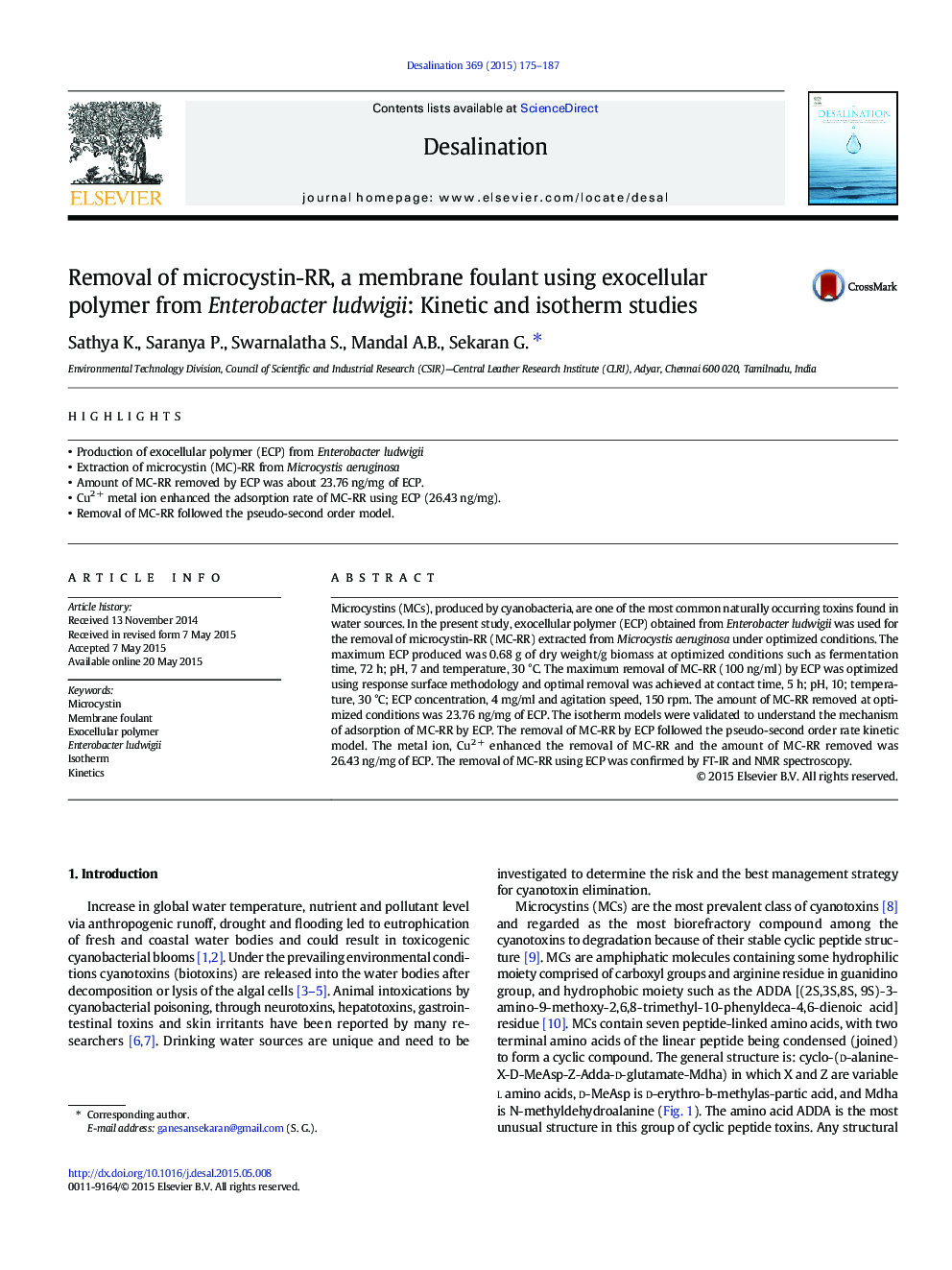| Article ID | Journal | Published Year | Pages | File Type |
|---|---|---|---|---|
| 623089 | Desalination | 2015 | 13 Pages |
•Production of exocellular polymer (ECP) from Enterobacter ludwigii•Extraction of microcystin (MC)-RR from Microcystis aeruginosa•Amount of MC-RR removed by ECP was about 23.76 ng/mg of ECP.•Cu2 + metal ion enhanced the adsorption rate of MC-RR using ECP (26.43 ng/mg).•Removal of MC-RR followed the pseudo-second order model.
Microcystins (MCs), produced by cyanobacteria, are one of the most common naturally occurring toxins found in water sources. In the present study, exocellular polymer (ECP) obtained from Enterobacter ludwigii was used for the removal of microcystin-RR (MC-RR) extracted from Microcystis aeruginosa under optimized conditions. The maximum ECP produced was 0.68 g of dry weight/g biomass at optimized conditions such as fermentation time, 72 h; pH, 7 and temperature, 30 °C. The maximum removal of MC-RR (100 ng/ml) by ECP was optimized using response surface methodology and optimal removal was achieved at contact time, 5 h; pH, 10; temperature, 30 °C; ECP concentration, 4 mg/ml and agitation speed, 150 rpm. The amount of MC-RR removed at optimized conditions was 23.76 ng/mg of ECP. The isotherm models were validated to understand the mechanism of adsorption of MC-RR by ECP. The removal of MC-RR by ECP followed the pseudo-second order rate kinetic model. The metal ion, Cu2 + enhanced the removal of MC-RR and the amount of MC-RR removed was 26.43 ng/mg of ECP. The removal of MC-RR using ECP was confirmed by FT-IR and NMR spectroscopy.
